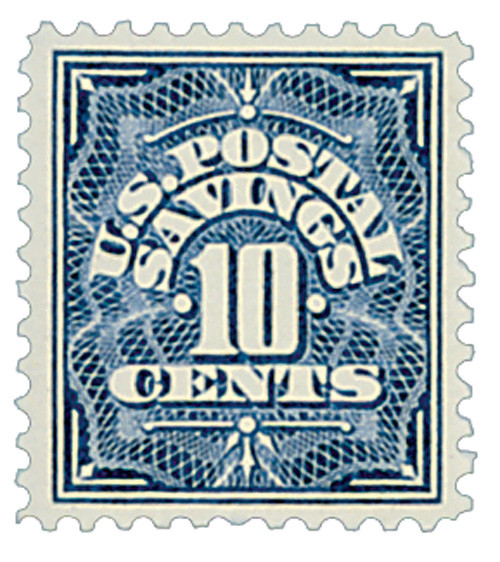The Postal Savings System was established to serve small investors living in rural communities. Under the program, lower and middle income individuals were able to deposit funds at their local post office. Postal Mail stamps, given as proof of the deposit, were redeemable in the form of credits to Postal Savings accounts.
President Theodore Roosevelt first promoted the Postal Savings System as a solution to public distrust of traditional banks. A Congressional act established the system effective January 1, 1911. Under the act, the Postal Savings System paid two percent interest per year. The minimum deposit was $1.00 with a maximum of $2,500.00. Postal Savings Stamps were issued January 3, 1911, with a 10¢ denomination. A 10¢ deposit card was also issued on that date.
The Postal Savings System proved to be very popular among rural Americans, immigrants familiar with similar systems in their native countries, and working people who were unable to conduct transactions during the limited hours of traditional banks. Postal Savings deposits could be made six days per week between the hours of 8 a.m. and 6 p.m. The system eventually extended to over 5,000 post offices in 48 states.
Deposits to the U.S. Postal Savings System declined after World War II. The Post Office Department stopped accepting deposits on April 27, 1966, and officially ended the program the following year.







